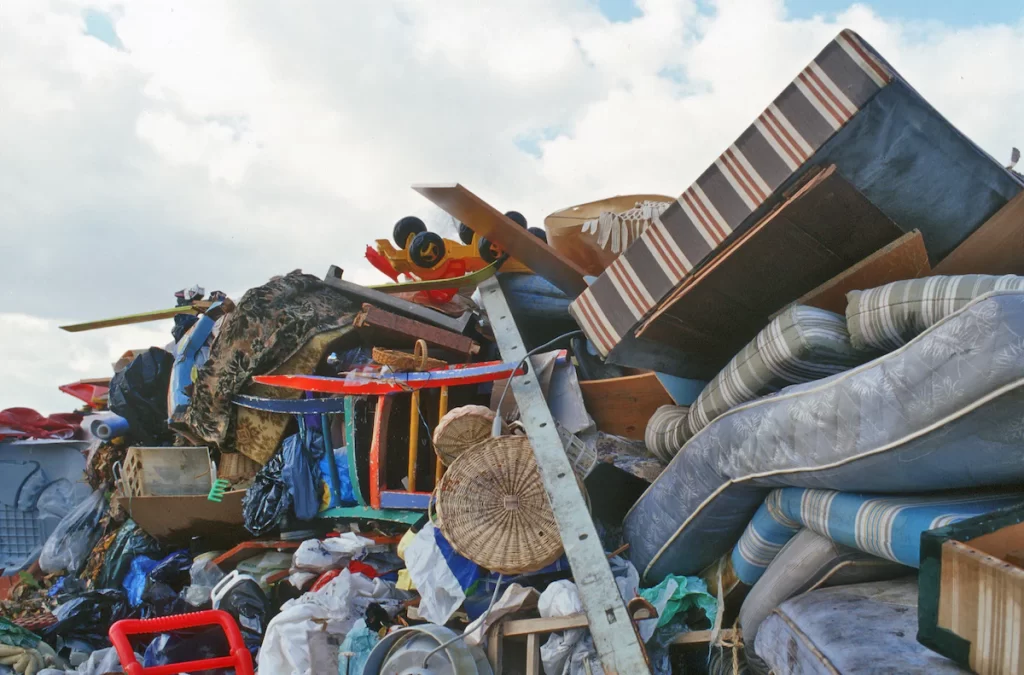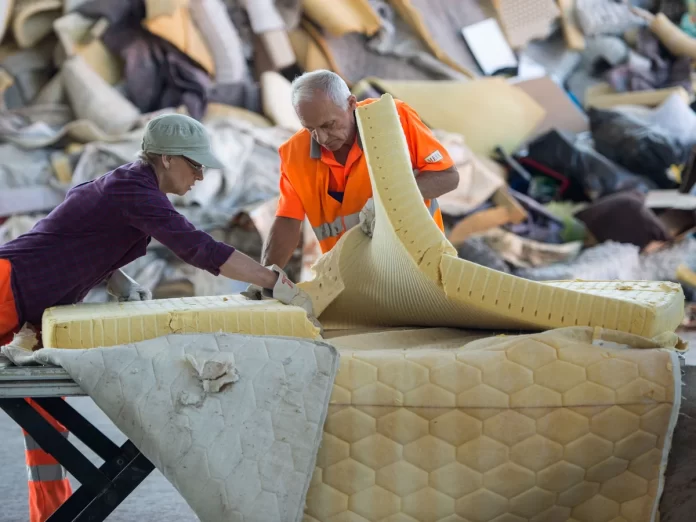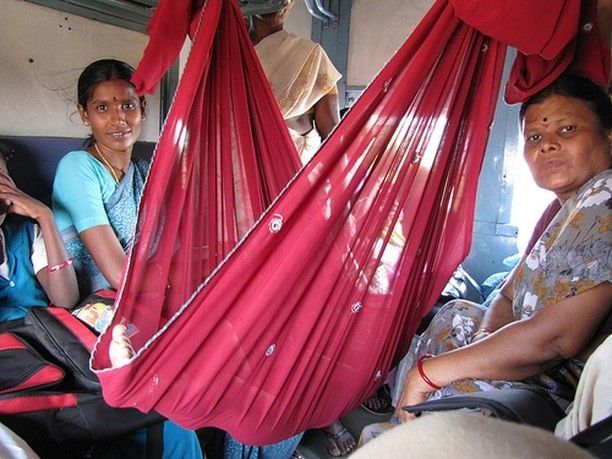This story is fictional. However, the facts about waste in the U.S. mattress industry are real, as is the growing infiltration of synthetic mattress materials into developing countries such as India. Hopefully, this story offers inspiration to a company or an entrepreneur to disrupt the synthetic unsustainable mattress industry.
A Humble Beginning Rooted in Tradition
Yograj hailed from a small town in Rajasthan, where simplicity and sustainability were a way of life. Raised in a household that valued harmony with nature, he understood early on that well-being extended beyond diet and exercise—it included how and where one slept. His passion led him to become a renowned yoga instructor and sleep consultant, revered by students for his wisdom. A self-taught scholar of ancient Indian knowledge systems, he often reminded his students of the age-old maxim: “Early to bed and early to rise makes a man healthy, wealthy, and wise.”
Ancient India understood that sleep was not just about rest but about aligning with nature’s cycles. Yograj frequently spoke about the significance of Brahmamuhurtam—a time duration of 1 hour and 36 minutes before sunrise, scientifically ideal for meditation, prayer, and learning due to heightened oxygen levels, minimal electromagnetic interference, and peak melatonin secretion, which enhances focus and inner calm. The brain is in a relaxed yet alert state, dominated by alpha and theta waves, promoting deep contemplation and retention.
Yet, as Yograj observed modern society, he saw an alarming rise in sleep disorders. In his view, the root causes were late-night lifestyles, poor sleep postures, and an ignorance of Vastu Shastra, the ancient science of architecture that offered guidance on sleep orientation and bedroom design for overall well-being. While many fixated on the type of mattress they used, Yograj understood that truly restful sleep was a holistic experience—one that extended far beyond just a soft surface.
The Decline of Traditional Sleeping Practices
As a sleep consultant, Yograj was deeply concerned about the disappearance of traditional Indian bedding. In villages, he noticed an increasing reliance on plastic mats, replacing the time-tested, eco-friendly sleeping materials of the past. Before synthetic intrusions, Indian households relied on:
- Cotton Gadda – Hand-layered cotton mattresses offering firm spinal support and breathability.
- Coir Mattresses – Made from coconut husk fibers, naturally firm, dust-resistant, and well-suited for humid climates.
- Charpoys (Rope or Cotton Strap Cots) – Traditional wooden-framed beds featuring tightly woven jute or cotton straps, designed to provide both body support and natural air circulation. The woven cotton straps, typically 3 to 4 inches wide, are interlaced in a vertical and horizontal pattern to form a firm, mat-like structure with minimal gaps. In some cases, users add cotton layers to fill any remaining spaces for enhanced comfort.
- Grass Mats (Darbha, Kusha) – Used by sages, believed to absorb negative energy and enhance meditation.
During visits to urban centers, Yograj was alarmed by the flood of synthetic memory foam and latex mattresses. These products, he realized, were not only unsuitable for India’s climate but also environmentally disastrous. Foam mattresses trapped heat, degraded poorly, and contributed to mounting landfill waste. The thought of reversing this unsustainable trend weighed heavily on his mind.

A Student’s Vision Sparks a Revolution
Yograj’s concern wasn’t just academic—he had witnessed firsthand how synthetic bedding was disrupting sleep patterns and harming the environment. Seeing young children suffer from sleep disorders in urban areas, he felt compelled to act.
As fate would have it, one of his most dedicated students, now an engineer with a business degree, proposed a radical idea: Why not create a sustainable mattress company that combined India’s ancient wisdom with modern e-commerce?
Inspired, Yograj and his student developed a business plan to reintroduce India’s traditional mattresses in a contemporary, customizable format. They secured initial funding from Yograj’s network of friends, family, and students, launching Yograj Green Mattresses—a pioneering brand committed to eco-friendly, modular bedding.
Revolutionizing the Mattress Industry
The company’s approach was simple yet disruptive:
- Customization – Customers could choose from traditional mattress types and assemble them at home. Tips were offered for minor at home adaptations.
- Personalized Sleep Consultation – A toll-free helpline advised consumers on sleep habits and mattress selection. Free Youtube videos on installation, mattress selection and so on was available on the company website. Agents were trained to consult on good lifestyle leading to good sleep rather than trying to sell a mattress.
- Retail Partnerships – The brand collaborated with urban department stores to showcase products.
- Sustainable Advocacy – Yograj successfully lobbied India’s GST (Goods & Services Tax) Council to impose the highest tax tier on synthetic mattresses, discouraging their use due to poor recyclability and landfill concerns.
Gradually, as synthetic mattress disposal became costlier, consumers began turning to sustainable alternatives. Yograj Green Mattresses steadily gained market share, cementing itself as an industry leader in eco-conscious bedding.
Going Global: Tackling the U.S. Mattress Waste Crisis
One day, a group of young employees presented Yograj with a startling slide deck on U.S. mattress waste. The statistics were staggering:
- The U.S. mattress industry was valued at over $11.57 billion annually, with approximately 36 million mattresses sold each year (1)
- In the United States, over 50,000 mattresses are discarded daily, amounting to approximately 18.2 million annually (2). Despite the fact that more than 75% of a mattress is recyclable, fewer than 10% are actually recycled, leading to significant environmental concerns (3)
- If stacked one on top of the other, the mattresses discarded in just two weeks would reach the height of Mount Everest.
Yograj saw an opportunity. Breaking into the U.S. market was no easy feat. Consumers were accustomed to high-tech memory foam, and sustainability was often an afterthought. However, Yograj Green Mattresses countered this with aggressive education campaigns and partnerships with wellness influencers. He interviewed western tastes into his bed frame size and design.
With strategic funding, the company successfully entered the U.S. market, introducing an affordable, eco-friendly alternative to synthetic mattresses. These mattresses were priced at least 50% lower than synthetic options, required no box spring, and were made from 100% biodegradable materials. Designed for convenience, they could be easily disassembled and reassembled for transport and were sold exclusively through e-commerce platforms. Disposal costs were minimal, as the mattresses fit easily into a trash can and took up significantly less landfill space compared to synthetic alternatives. This information was effectively communicated to eco-conscious customers, the primary audience for Yograj Green Mattresses. The company leveraged insights and the successful business model from India to establish its presence in the U.S. market. The primary emphasis was always on lifestyle and sleep solutions for the customers
A New Era: Expanding Beyond Mattresses
As Yograj Green Mattresses gained traction, the company expanded its product line to include an innovative, low-cost solution for infants:
The Ingenious Sari-Hammock Crib
Drawing inspiration from Indian mothers, who had long used sari-hammock cribs for their babies, Yograj introduced this age-old practice to global markets. Unlike rigid Western cribs with foam mattresses, a suspended cotton sari mimicked the gentle rocking of the womb, promoting deep sleep, improved air circulation, and relief from colic. The design quickly gained popularity among eco-conscious parents seeking sustainable infant care solutions.
Pioneering Circularity in the Mattress Industry
Beyond product innovation, Yograj Green Mattresses became a leader in circular economy principles:
- Lab-Grown Cotton – Reducing dependence on monoculture farming, which depletes soil fertility.
- Recycled Textiles – Transforming worn garments into cotton mattress fillings, minimizing waste.
- Modular Designs – Enabling parts to be replaced or composted, extending product life cycles.
- Green Composites – Using green composites made from agricultural stubble in northern India for bed frames and slats has helped eliminate stubble burning.
A Legacy of Sustainability
Within five years, Yograj Green Mattresses had replaced over 500,000 synthetic mattresses, preventing thousands of tons of waste from entering landfills.
Yograj’s mission was not just about selling mattresses—it was about redefining how we sleep and how we care for the planet. The question remains: Will we embrace sustainable sleep, or will we continue the cycle of waste?
References
- IBISWorld, “Mattress Manufacturing in the US – Market Size & Industry Statistics,” 2023.
- Mattress Recycling Council. Our Impact. https://mattressrecyclingcouncil.org/our-impact/?utm_source=chatgpt.com
- Mattress Recycling Wakes Up. Chemical & Engineering News, January 28, 2025. https://cen.acs.org/environment/recycling/Mattress-recycling-wakes/103/i4?utm_source=chatgpt.com
Ram Ramprasad is a passionate advocate for sustainability, having authored two books and numerous articles on sustainable strategies for reputable publications. He previously served as the Global Marketing Director for a leading multinational company in the USA. Ram holds degrees from Madras University in India and Yale University in the USA
Ram’s previous articles published in SustainabilityNext
Startup ideas for Sustainable Cremation and Burial Solutions in India
How India’s Agriculture Can Save 200 Billion Cubic Meters of Water
Ten Powerful Reasons for Declaring Moon A Living Entity
Sustainable Wind Turbines: Balancing Bird Protection and Agriculture
A Holistic Water Strategy for India
How India Can Leverage its GST Model for Building a Sustainable Future
A Toolkit for India’s Green Transition
Green Building Strategy – Integrating Innovations from East and West
Eat Less Fish, Save the Planet
Startups are Working Hard for a Plastic-free World
Hydrogen More Harmful Than Fossil Fuels
Tech Startups Can Make India Water Rich
Measure How Basic Elements are Doing, Not Just GDP
A Radical Strategy for A Greener India – The Story of Kusha












